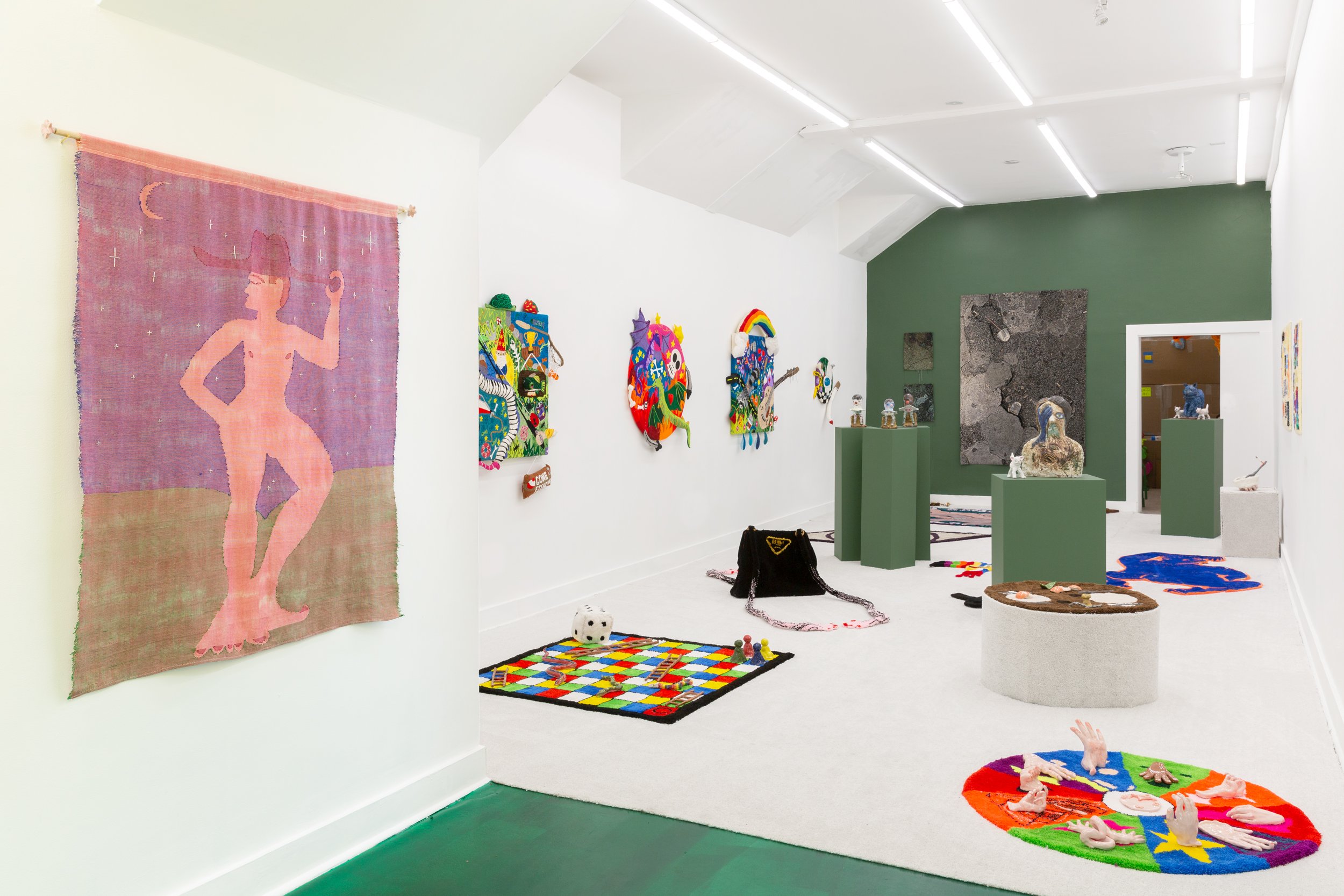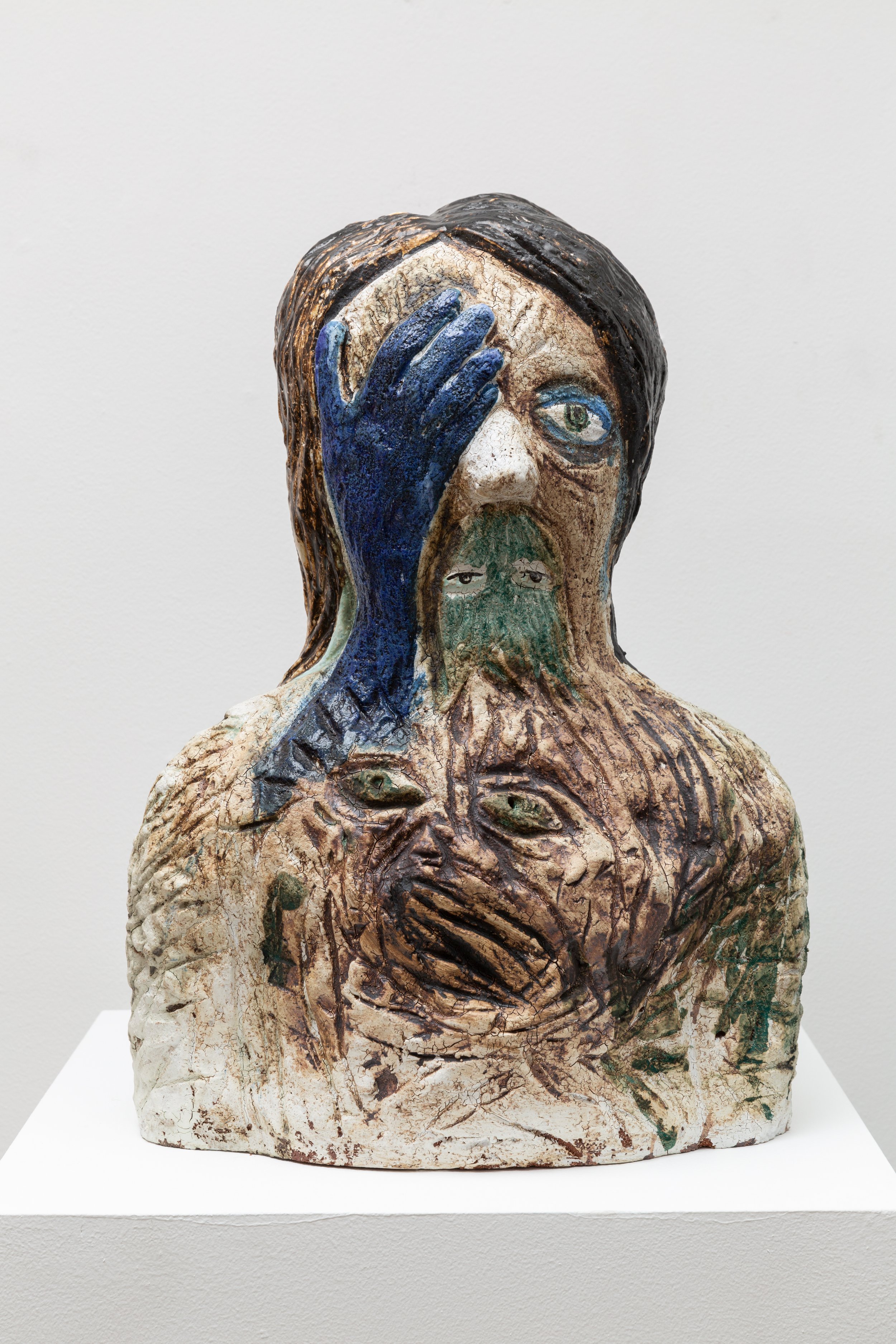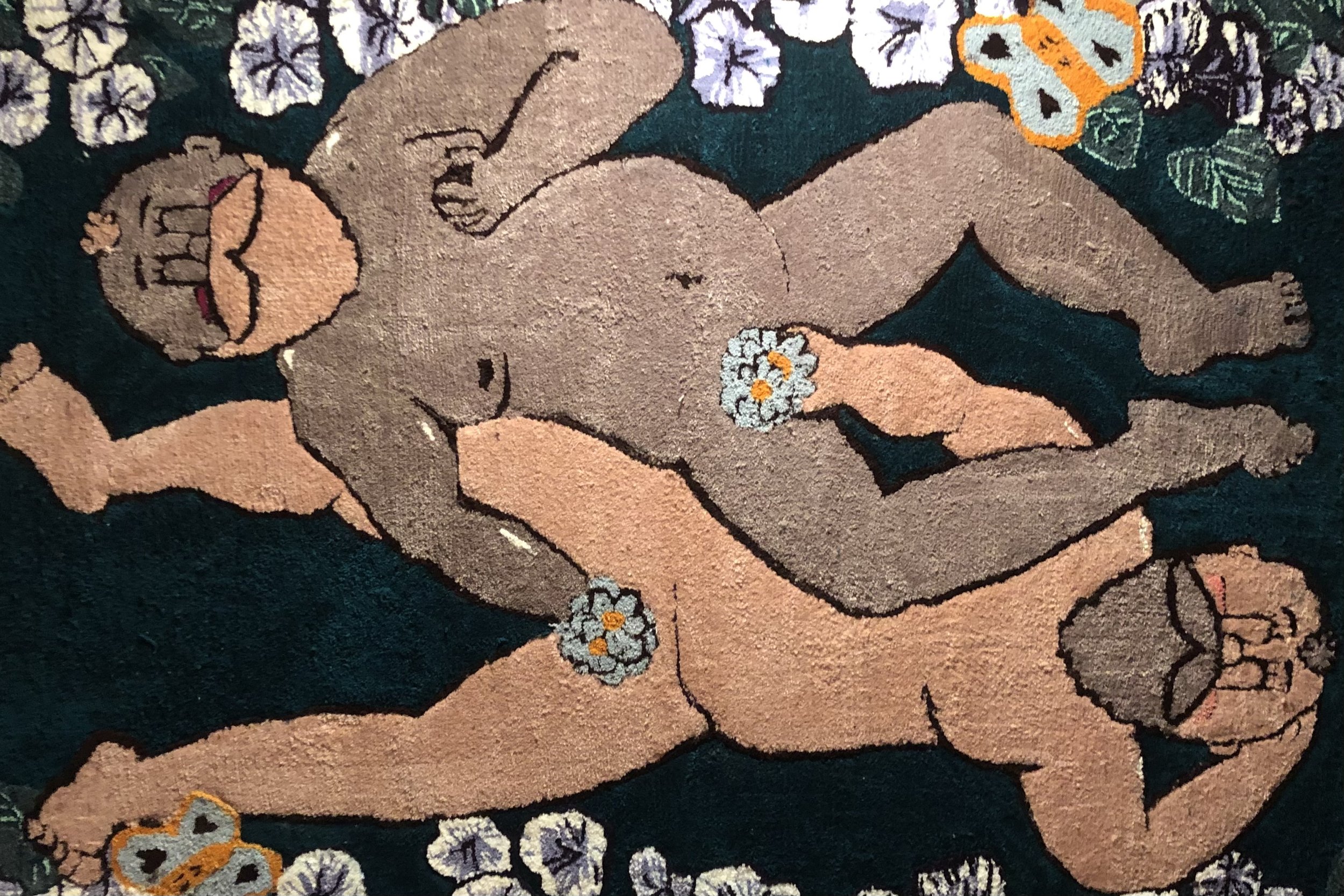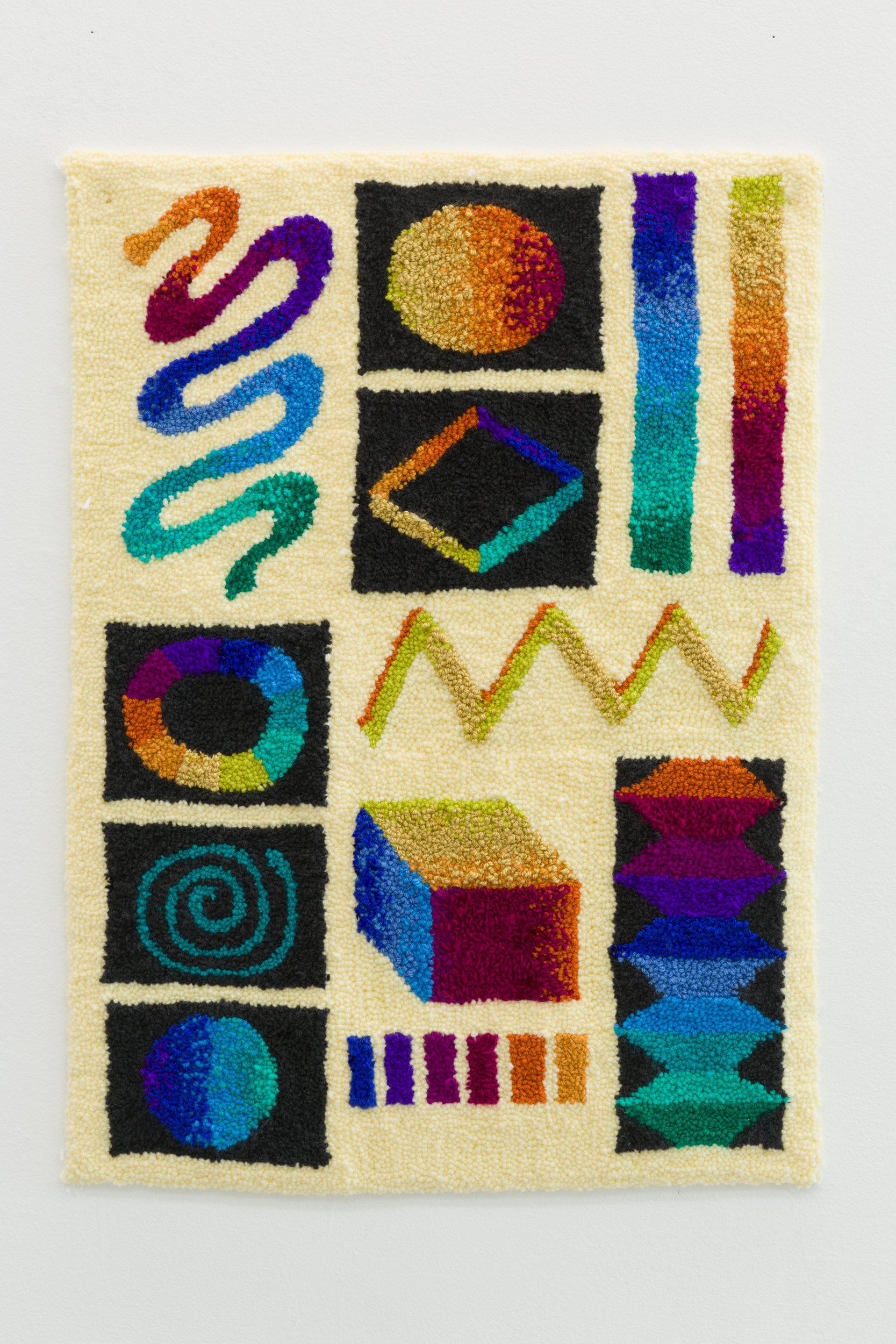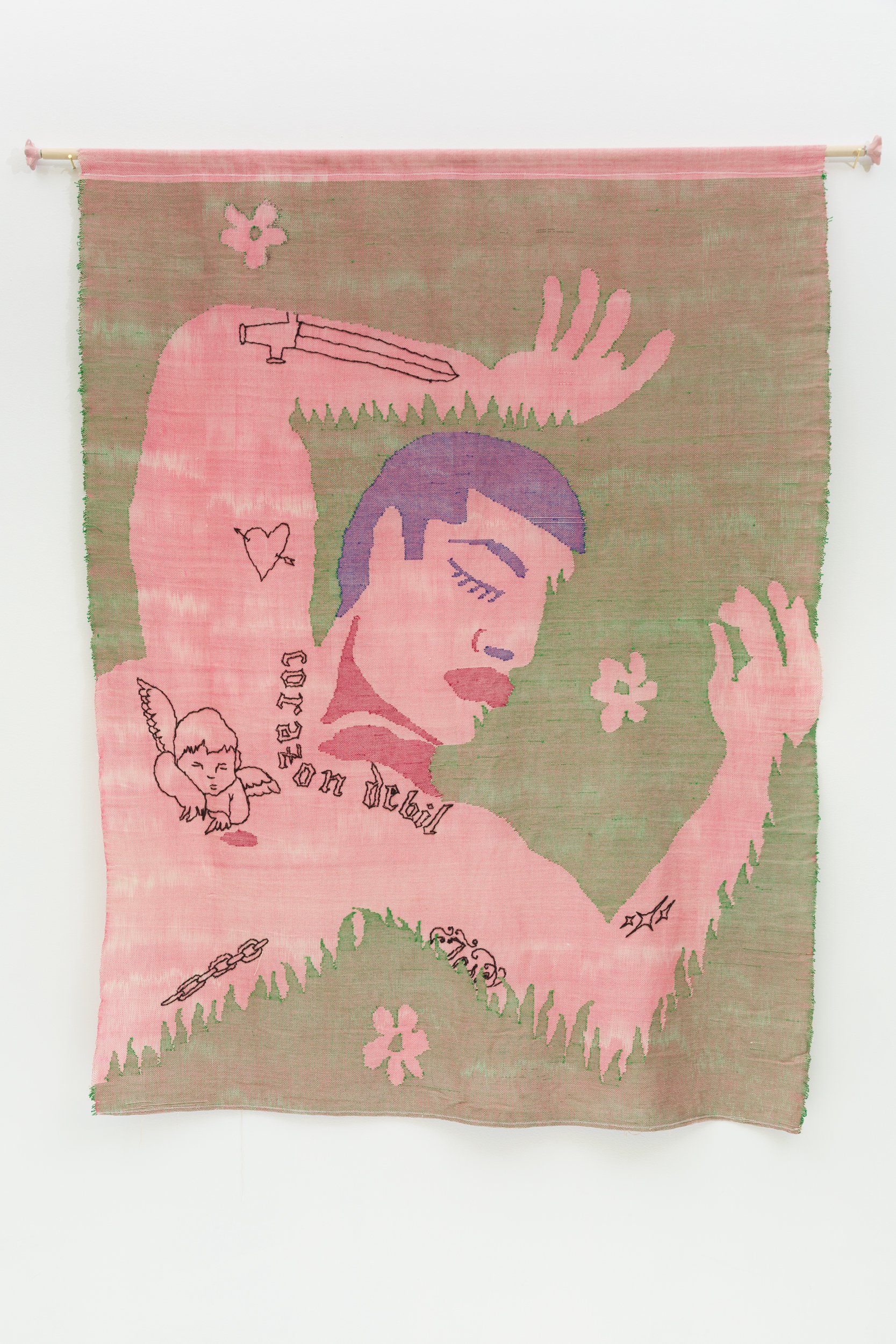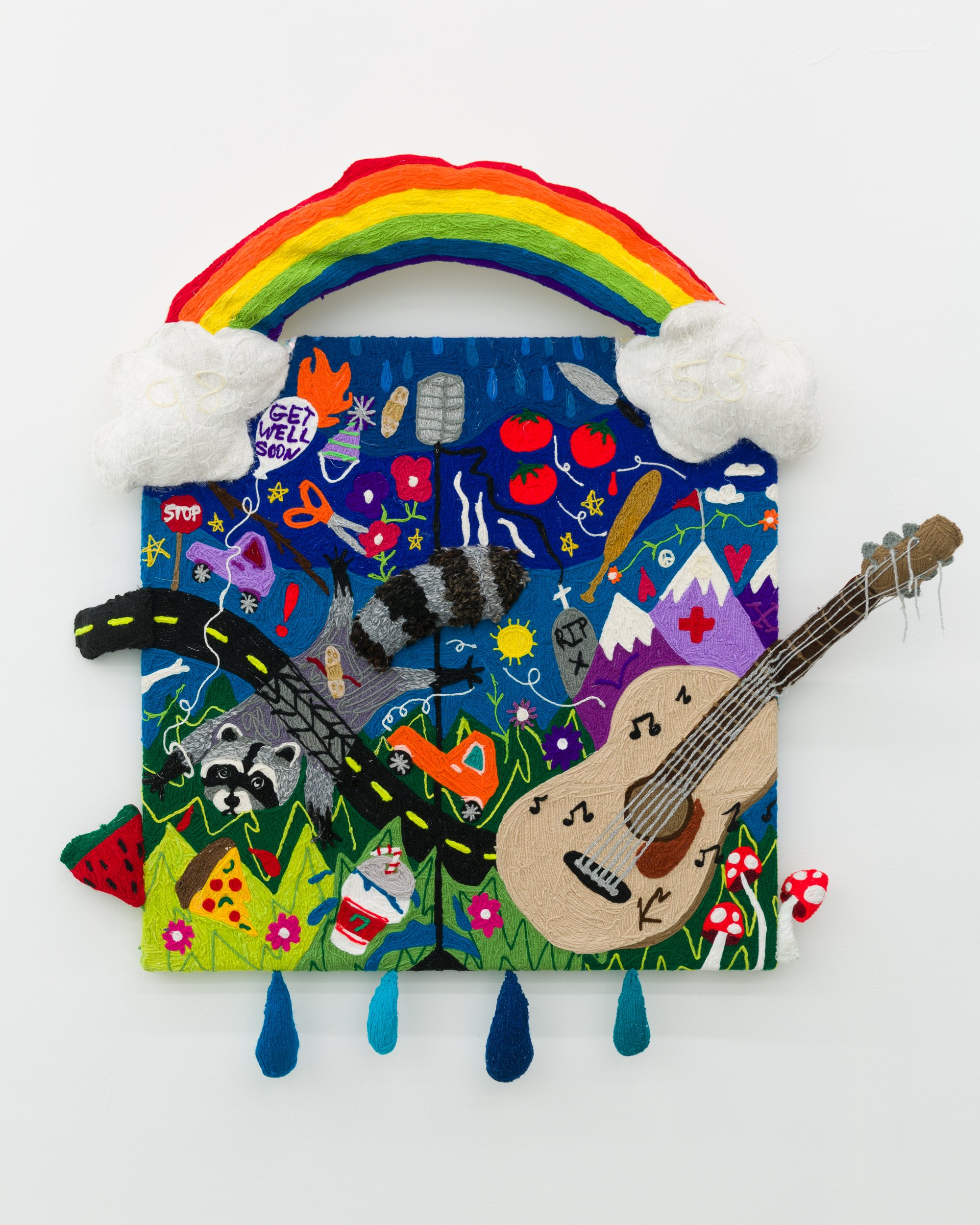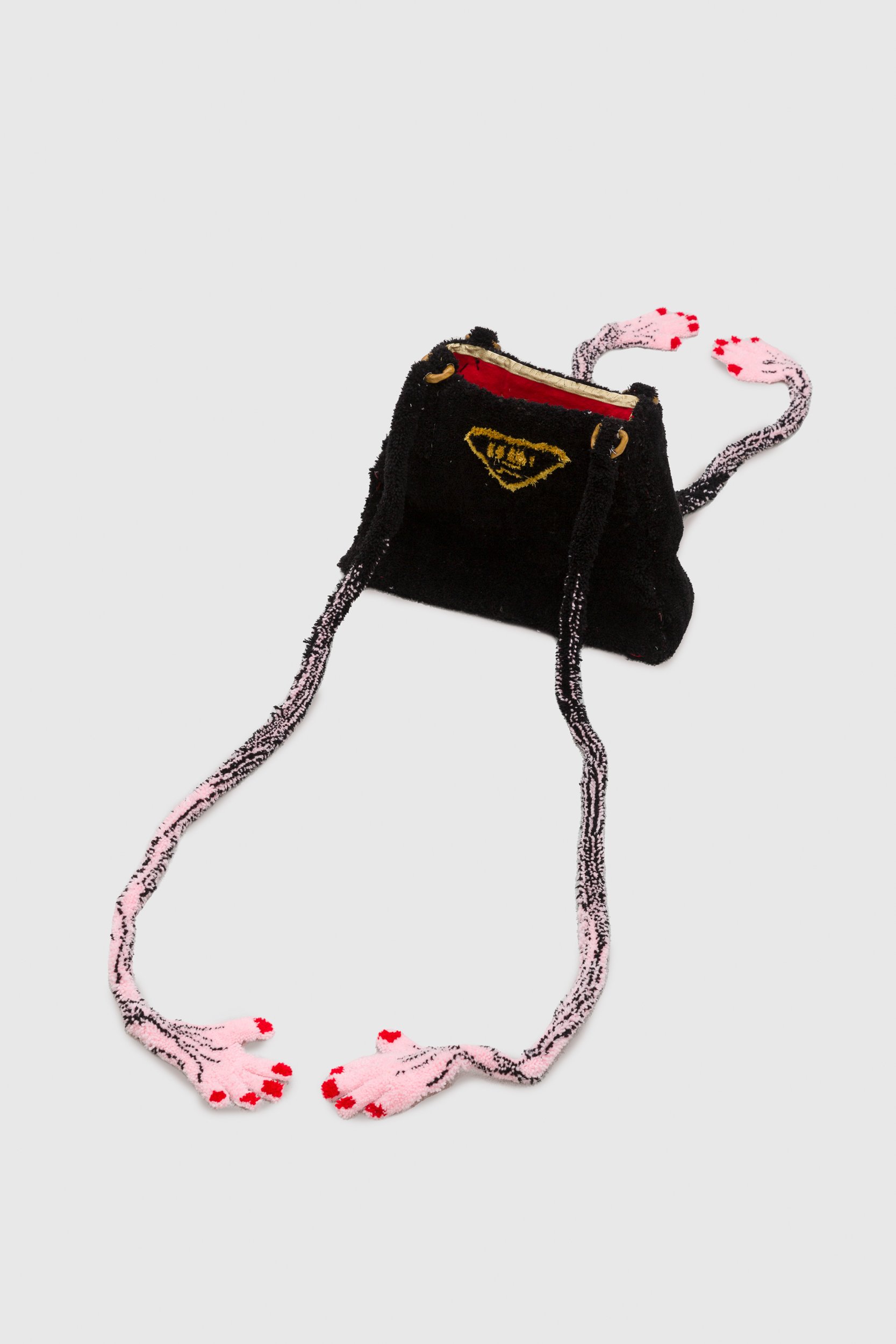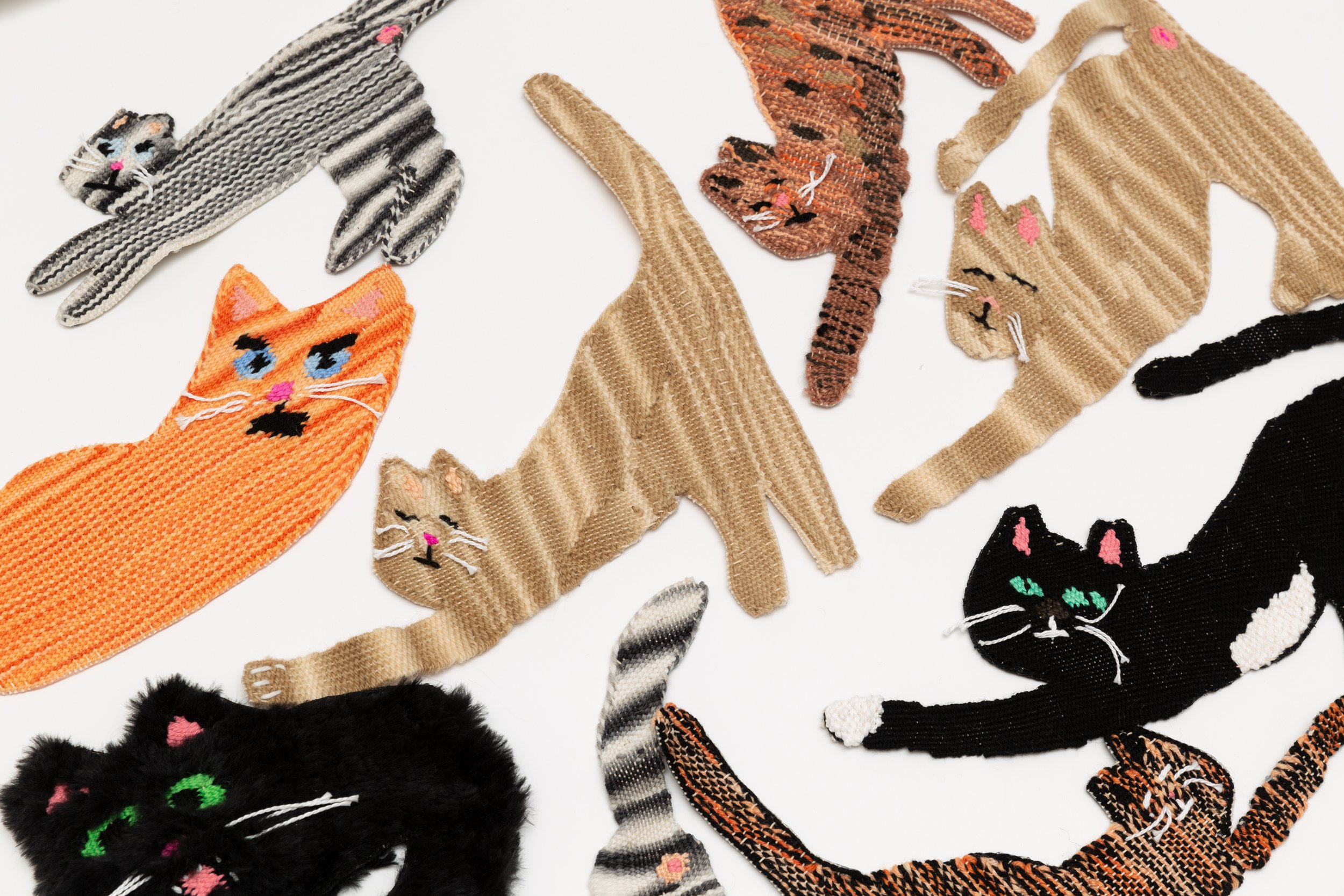12.09. 2022 — 01.07.2023
TREAD LIGHTLY
Zack Bass, Andres Payan Estrada, Kaylie Kaitschuck, Kayla Mattes, Juan Arango Palacios, Thomas Martinez Pilnik, Aliyah Salmon, Kim Tucker
Lauren Powell Projects is excited to announce Tread Lightly, an exhibition of work by eight artists opening Friday, December 9, 2022 and open through Saturday, January 7, 2023. The tufted, woven, and ceramic pieces by Zack Bass, Andres Payan Estrada, Kaylie Kaitschuck, Kayla Mattes, Juan Arango Palacios, Thomas Pilnik, Aliyah Salmon, and Kim Tucker on the walls and floors demand a level of metaphoric and physical care from the viewers as personal anxieties, trauma, vulnerabilities, and triumphs are laid bare.
Tread Lightly is itself an imperative. It asks the gallery visitors to take care as they enter and assess the work presented before them. Who or what will be harmed if this is not headed is less clear. Historically artists have been thought of as agents possessing power over the viewer. From ancient craft objects believed to give protective powers to the 20th century museum goer weeping in front of a Rothko, the viewer is the agent being acted upon. And in a time profoundly impacted by the effects of a global pandemic there is perhaps no verb choice that would give us greater pause than Tolstoy’s when he defines art as something that leaves the viewer “infected by an experience.” Simultaneously, the artists are here presented as the vulnerable party as they reveal to us scars and anxieties within these works. Just as Yeats pleaded to the object of his affection “Tread softly because you tread on my dreams,” so too these artists ask us to receive what they are offering with an awareness of the fragility inherent in the deeply personal nature of its content.
This fragility extends from the content to the physical object. The works included in Tread Lightly comprise a range of materials associated with craft and decorative work. Ceramic and weavings have served both decorative and practical uses since ancient times, and we are all familiar with the delicate nature of these objects of everyday life. We have all broken a mug or soiled a rug. Not only are the artists trusting a capricious public with the deeply personal, they have also chosen delicate materials threatened by their daily usage as a vessel.
As an artist interested in the complex interactions humans have with physical materials, Andres Payan Estrada’s work has long employed objects and images specific to his life and experiences. Decontextualized, these totems create a sort of abstracted self portrait connecting the artist and viewer with places and memories both familiar and distant. Estrada’s woven wall hangings reproduce images the artist took of the floors of gay nightclubs after closing. The discarded trash and debris are transformed into relics and the pieces of broken glass integrated into the installation appear as precious gems.
Thomas Pilnik’s sculptural rugs and ceramics with titles such as “The Grown-Ups’ Table,” “Cheat On Me,” and “I Find it Hard to Talk About Froot Loops” present the viewer with a narrative specificity. The imagery of childhood along with the locale of the floor, a site of childhood play, lend these works a feeling of autobiography, entrusting us with snippets of personal history and, possibly, sources of trauma.
Juan Arango Palacios’s deeply personal practice investigates and exalts the experiences of people of marginalized identities. As a queer artist raised in Colombia, Palacios seeks to celebrate their community, providing a space of comfort and wellbeing. Palacios’s weavings depicting figures in a calm, pastoral landscape together with the soft nature of the material invite the viewer to find a place of rest.
In contrast with the craft origins of the materials and techniques, a number of the works employ the visual language of the internet.
The playful shapes, colors, and gradients of Aliyah Salmon’s wall hangings couple a distinctly digital aesthetic with the folk craft of handmade punch needle rugmaking. These Microsoft Paint-esque compositions and the personal objects and icons included in Salmon’s representational work share a sense of joy and pride in their creation and self-expression and in sharing them with the viewer.
Likewise, the gay (in all senses of the word) bodies inhabiting Zack Bass’s rugs invite the viewer to take shared joy in the self. The playful colors and inviting textures promise safety and comfort in individual expression.
Kaylie Kaitschuck’s colorful embroidered paintings are packed with imagery, literally bursting into three dimensions from the confines of the canvas, related to growing up in the American Midwest. The nature of the drawings, like scribbles in the margins of a textbook, evoke both the bucolic and carefree nature of an idealized adolescence as well as the very real and impactful anxieties and traumas associated with the teenage experience.
The characters in Kim Tucker’s oddly whimsical ceramic figures feel like reaction memes from a parallel universe. The expressions, shifting between embarrassed, bashful, playful, tired, drunk, and a host of other feelings and states, present an endlessly empathetic ambiguity. As an online teen might comment, “same.”
Kayla Mattes’s woven installation features the ubiquitous figure of the internet, the cat. From Victorian postcards to GIFS, cats have long been sources of low stakes amusement of the kind we now turn to our screens to distract ourselves with. And weaving has a long shared history with computing, as the translation of the over-under arrangement of the warp and weft to the ones and zeros of binary code would lead to the development of the first computer systems and later to the digital culture we have today. This work asks us to consider the impact of such cultural shifts as we survey the chaos and confusion of the disorderly cats inhabiting the installation. Nevertheless, Mattes provides us and the cats with a single word at the center, “HOPE,” or at the very least a hope that there is yet hope.
Though the title Tread Lightly may carry with it a warning, it is at the same time an implicit invitation to enter. It asks us to take time with these offerings on the floors and the walls, items with origins in crafts of domestic use. The artists’ vulnerability allows us to find a sense of home and safety together and invites us to consider the community that can be formed if we consider our individual subjectivities and tread a little lighter.
text by Elise Cabral
